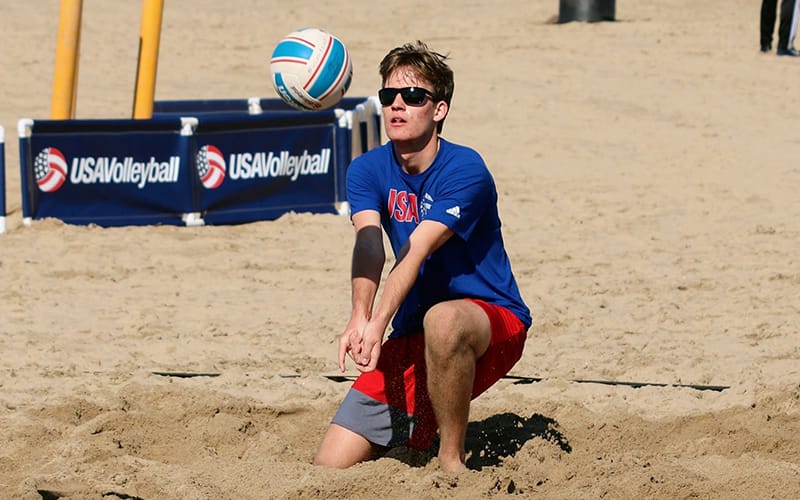
Originally published in Volleyball USA, Summer 2017
Karch Kiraly
Beach volleyball Olympic gold medalist, U.S. Women’s National Team Head Coach
Study the people who you’re playing. If you watch someone attack the ball a number of times, you build a visual encyclopedia on them and that tells you what looks normal and what might look different if, say, they’re going to hit a shot rather than hitting hard. I call it hinky – something is a little different.
It’s important to have a mental book on each player’s patterns. And if you’re seeing players for the first time, watch them whenever you can – in warm-ups or when you’re on a break from play and they’re competing.
You should always be a student of the game. It’s fun to be at the beach, but if you’re there to compete and play your best volleyball, you’ve got to spend some time studying other people and learning their games.
Ty Tramblie
AVP pro and coach
Focus on being stopped and balanced in a position that allows you to move easily in any direction. Always stay locked on the hitter to see what information they are giving you in terms of the speed of their approach, where their feet are in relation to the ball, how they are facing and arm position. Truly studying your opponent to know their offensive tendencies will yield digs that will lead to points that will translate to wins.
Betsi Flint
U.S. National Beach Team
I think the key to making more digs is reading the game. After the setter sets, you want to get your eyes on the hitter really early and then make sure you’re stopped and balanced so you can run anything down.
Play to the hitter’s tendencies. If they love the cut shot, maybe you take one more step to the line. If they like the line shot, take one more step to the middle, ready to run down that shot. It depends on the person.
If you don’t know them very well, you play basic defense until you see what they like to do. Another thing to watch for is the speed of their approach and the speed of their arm. If they come in slow, they’re more likely to shoot. If they come in super hard, be ready for a hit. And sometimes players will come in fast but then slow down their arm, so keep watching the hitter.
Andrew Bennett
Director/founder of Tamarack Beach Volleyball Club
Strategy, strategy, strategy.
To make more defensive plays on the ball, teams need to play volleyball chess. Be a few moves ahead of your opponent. If your opponent likes to hit at a certain spot on the net, make them uncomfortable by forcing them to hit elsewhere – out of the middle or at the pin.
For instance, you can push them to the pins or out of the court by serving to their outside arm. Or you can make them come from the middle – or force the setter to adjust – by serving interior middle seams.
For hitters who have a big approach, serving them short middle can take them out of their comfort zone. Be a student of the game as far as creating game plans, changing them as needed and mixing up how you play defense. Pull different angles, block different angles. Make your opponent go to plan B or C.
Barbra Fontana
Beach Olympian, beach coach
Work on your technique. Break down all the parts to getting balls up. For example: your starting position, your body position, getting stopped, your balance and tracking balls in straight lines. If you learn how to play defense in the most efficient way, your defensive range will go up. It takes discipline and lots of reps, but it will pay dividends in points!
